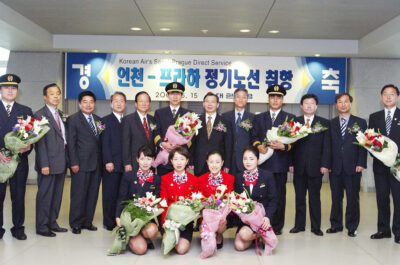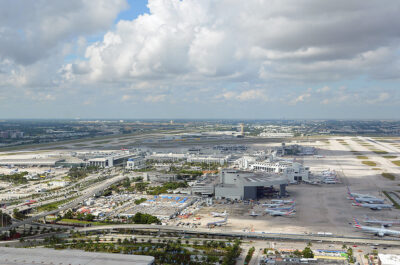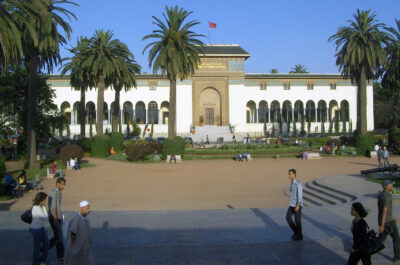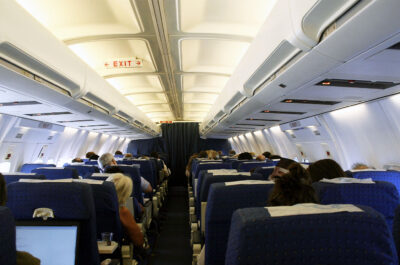A world class gateway, linking Glasgow to destinations across the globe, providing thousands of new jobs and generating hundreds of millions of pounds…
A world class gateway, linking Glasgow to destinations across the globe, providing thousands of new jobs and generating hundreds of millions of pounds for the Scottish economy.
That was the vision for Glasgow Airport outlined today by airport operator BAA Scotland as Scotland`s busiest international airport published its blueprint for the future.
The Glasgow Airport Outline Master Plan was formally launched today by BAA Scotland`s managing director Donal Dowds and Glasgow Airport managing director Stephen Baxter.
Donal Dowds said: “Today`s outline master plan is a bold, imaginative document. It sets out how Scotland`s busiest airport will develop over the next quarter century, the impact it will have on the economic well being of Scotland, and the benefits it will bring in terms of job creation and tourism.”
The report looks in detail at how Glasgow Airport will develop over the next ten years and then in more general terms at the period up to 2030.
Passenger numbers at Glasgow Airport have increased by more than 60% in the past decade, rising from 5.4 million in 1995 to almost 8.7 million today. The outline master plan forecasts that by 2015, the airport could handle between 12 and 15 million passengers, with around 125,000 annual landings and take-offs.
Beyond 2015, to 2030, Glasgow Airport could be handling up to 24 million passengers, with more than half travelling direct to and from international destinations.
Increasing volumes of traffic will require considerable investment in airfield facilities. To meet forecast demand, the construction of rapid access and exit taxiways and an additional section of parallel taxiway will be required in the period to 2015. More aircraft stands will be required to cater for larger sized aircraft, particularly as the airport continues to attract new international destinations.
BAA Glasgow has made provision for a second runway, should it be required. The outline master plan includes two sets of indicative plans for the period between 2015 and 2030 – one showing the airport with a single runway, the other showing how the airport could accommodate twin parallel runways. Ultimately the market, and passenger demand, will determine whether there is a need for a second runway.
Airport development up to 2015 can be accommodated on land currently owned by BAA. Beyond 2015, additional land to the east of Abbotsinch Road will be required.
In order to meet passenger growth, the terminal will be significantly extended and reconfigured to provide more check-in desks, baggage systems and departure lounges.
The first stage of this development programme, a £6 million expansion of the international wing of the terminal is currently underway, and is set for completion in autumn 2005. Within the next ten years, a second international pier and ten new aircraft stands will also be built to the west of the existing international pier to cater for the forecast growth in international travel.
Beyond 2015, the existing east pier will be replaced by a modern and significantly longer pier.
Should passenger numbers grow at a higher rate than forecast, and Glasgow were to develop as a twin parallel runway by 2030, it is possible an additional terminal would be built.
Good surface access will be critical to Glasgow Airport`s ability to grow. The outline master plan calls for improvements to the M8 between junctions 26 and 29 to allow current and future traffic volumes to access the motorway in a safe manner.
BAA Scotland is committed to increasing the numbers of passengers who access its airports by public transport and looks forward to more choice and a properly integrated surface access system. Proposals by Strathclyde Passenger Transport for a rail link between Glasgow Airport and Glasgow Central Station are well advanced. The rail link could be operational by the end of 2008.
Clearly, future growth of the airport will impact on local communities and the environment. The outline master plan sets out a series of strategies for managing environmental impacts. The airport will grow in a sustainable and responsible manner. Any development will take place incrementally to ensure, as far as possible, that additional capacity closely matches passenger demand.
A 2002 study by the Fraser of Allander Institute found that Glasgow Airport contributes more than £700 million a year to the economy and supports 15,700 jobs across Scotland, with more than 5,000 people directly employed at the airport. As the airport expands, the number of people directly employed at Glasgow Airport is forecast to rise to 8,200 in 2015 and to 12,000 by 2030, an increase of some 7,000 jobs.
If the number of indirect employment opportunities increases in line with recent trends, a further 21,000 jobs could be created.
The outline master plan also suggests Glasgow Airport will become an increasingly important freight hub. With international air services expected to grow significantly, Glasgow`s cargo business is forecast to grow from 8,700 tonnes today to 13,000 tonnes by 2015 and almost 20,000 tonnes by 2030.
Stephen Baxter, managing director of Glasgow Airport, said: “Today, as we glimpse into the future, we see an airport serving Scotland`s largest city, generating hundreds of millions of pounds for the Scottish economy every year and creating thousands of new jobs. A 21st century gateway for the west of Scotland, serving as many as 24 million passengers, many of them flying direct from Glasgow to destinations across the globe, with millions more using Glasgow as their gateway into Scotland. This is our vision for the Glasgow Airport of tomorrow. Its impact, on employment, travel, tourism and the economy, will be considerable.”
Following today`s launch, a three month consultation period will get underway, during which Glasgow Airport will invite local residents, politicians and business leaders to have their say on the future development of the airport. A series of public meetings will also be held across the region. Following the consultation a final version of the master plan will be published at the end of 2005.
Stephen Baxter added: “The airport brings many benefits to the local community, not least in terms of jobs and investment. However, we recognise there are disadvantages associated with living close to the airport. We will work with local communities to address these issues. We recognise that we can only grow with the support and trust of the communities we serve.”
Theodore is the Co-Founder and Managing Editor of TravelDailyNews Media Network; his responsibilities include business development and planning for TravelDailyNews long-term opportunities.






















































































































































































